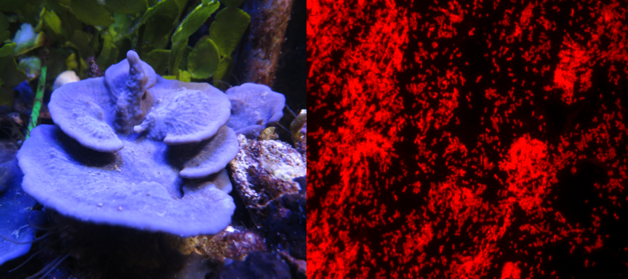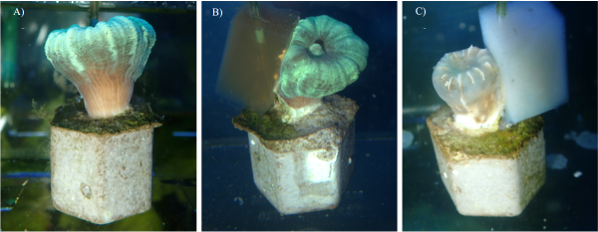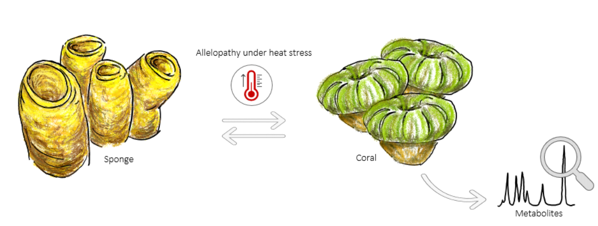
Dr. Sven Rohde
Tel.: +49-(0)4421-944-215
Fax: +49-(0)4421-944-140
E-Mail: sven.rohde@uni-oldenburg.de
Standort:
ICBM Terramare
Schleusenstraße 1
26382 Wilhelmshaven
Germany
Lage/Anfahrt
Chemical Interactions
Chemical interactions of sponge-holobionts against corals
Many sponge species use allelopathic metabolites to repress corals and
thus compete for space. The fact that a majority of reef sponges host photosynthetic cyanobacteria obscures the producer of these compounds. Although many of sponge-cyanobacteria symbioses are assumed to act mutually beneficial, the ecological and evolutionary nature of theses symbioses remains to be explored experimentally.
To analyze ongoing metabolic processes and their effect on competitive interactions, we investigate the symbiosis of the sponge specific cyanobactera and their sponge hosts under varying light and temperature conditions. Growth, cyanobacteria abundance, photosynthetic yield, as well as metabolomic and microbial changes can be analyzed to reveal the effects of light and temperature stress on cyanobacteria, sponge and competitor performance. The results will give important insights in population and community adaptations within the context of global change.

Sponges often harbor large abundances of microbial symbiont, which provide important ecological and physiological functions.

Caulastrea coral in a chemical interaction experiment

Invertebrates use a variety of chemical metabolites to compete against other species. We study the ecological and chemical analyses of these interactions.

![[Translate to English:]](/f/5/_processed_/3/2/csm_ICBM-Logo-transparent-_91fe1c6774.png)